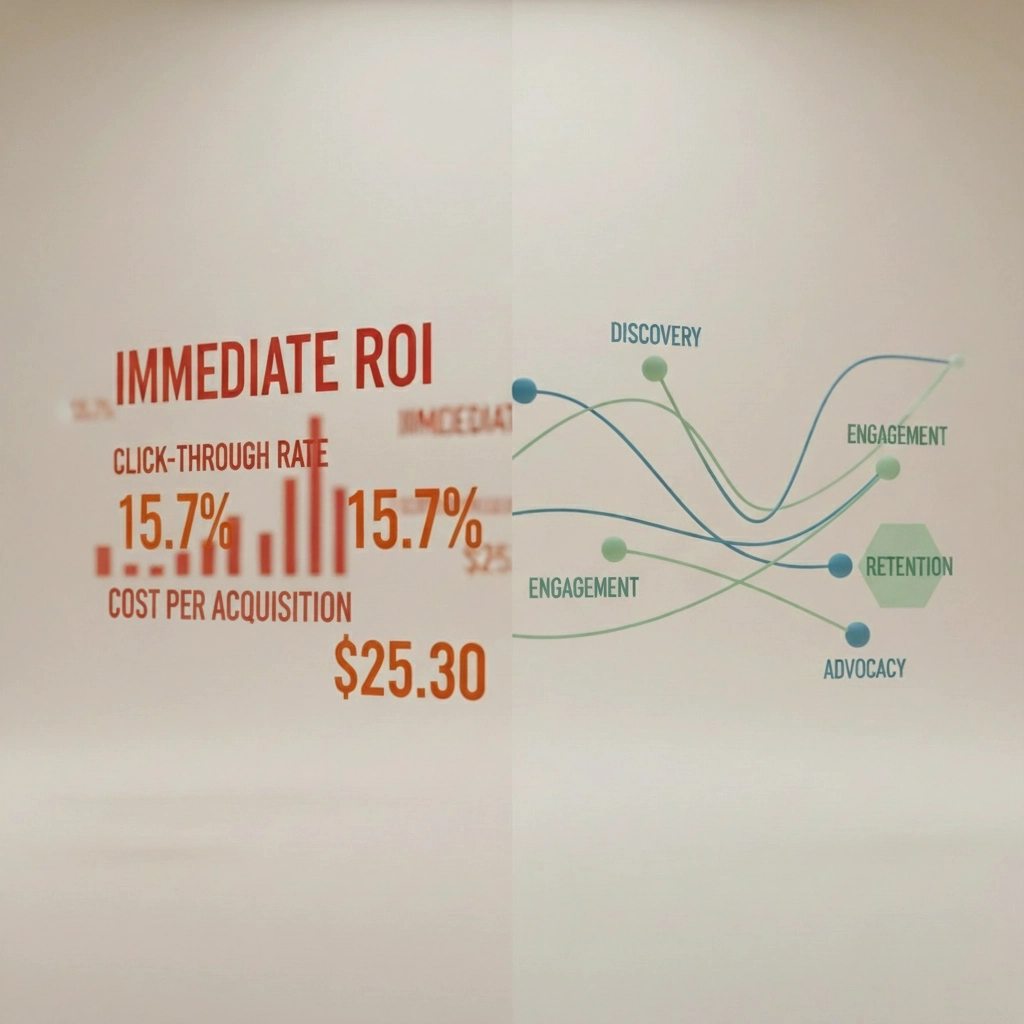7 Mistakes You're Making with Video Production ROI (And How Marketing Leaders Fix Them)

You've allocated a significant chunk of this year's budget to video production. The board's watching. Your team is excited. But three months later, you're staring at reports that make you question everything: impressive view counts with zero qualified leads, beautiful corporate videos that nobody shares, and a growing pile of content that looks great but doesn't move the needle.
Sound familiar? Here's the truth: most marketing leaders are unknowingly sabotaging their video production ROI through seven critical mistakes that turn what should be revenue drivers into budget drains.
Mistake #1: Treating Video Like a Direct Response Ad Campaign
The biggest ROI killer? Measuring video success with the same yardstick you'd use for Google Ads. We commonly hear from municipal clients who are unsure how to define success for their videos—wondering, for example, if a public awareness campaign should be measured by YouTube views, resident engagement, or something less tangible like public sentiment. That's like expecting a first date to end in marriage.
Video works differently. It builds trust, educates prospects, and nurtures relationships across multiple touchpoints before conversion happens. When you apply last-click attribution to video content, you're essentially ignoring 80% of its impact.
The Fix: Develop video-specific KPIs that track the full customer journey. For corporate internal communications, measure engagement depth and message retention rates. For tourism boards, track how video content influences website dwell time and booking page visits. Use multi-touch attribution models that recognize video's role in moving prospects through awareness and consideration phases.

Mistake #2: Starting Production Without a Strategic Foundation
We've seen it countless times: nonprofits rushing into production for their annual fundraising video without defining what "success" actually means. Startups creating brand videos because "everyone says we need them" without connecting content to business objectives.
Creating video content without documented strategy is like building a house without blueprints. You might end up with something that looks nice, but it won't serve its intended purpose.
The Fix: Before any cameras roll, establish specific, measurable goals. Define your target audience through detailed buyer personas. What pain points are you addressing? What action do you want viewers to take? A tourism marketing video should have different success metrics than a corporate training series. Document these strategies so every team member: and your video production partner: understands exactly what you're trying to achieve.
Mistake #3: Chasing Vanity Metrics Instead of Business Impact
Here's where marketing leaders get seduced by the wrong numbers. A corporate client proudly showed us their "viral" company culture video with 75,000 views. When we asked about qualified job applications generated, the room went quiet. Zero.
Meanwhile, their competitor's recruiting video with 3,000 views had generated 47 quality candidates and three key hires. Guess which one actually moved the business forward?
The Fix: Focus relentlessly on metrics that correlate with revenue. Track conversion rates, lead quality scores, and customer acquisition costs from video traffic. For municipal communications, measure citizen engagement and policy understanding rather than just view counts. For nonprofits, focus on donation conversion rates and volunteer sign-ups, not social shares.
Mistake #4: Creating Great Content Nobody Sees
You've invested thousands of dollars in a stunning brand story video. It lives on your website homepage and your YouTube channel. Three months later, it has 127 views. This scenario plays out daily across every industry we serve.
The distribution strategy afterthought is killing your ROI before it has a chance to breathe. Too many organizations spend 80% of their budget on production and 20% on getting their content seen by the right people.
The Fix: Plan distribution before production begins. Repurpose your long-form content into platform-specific formats: Instagram Stories, LinkedIn native videos, TikTok clips for younger demographics. Embed videos strategically in relevant blog posts and email campaigns. For corporate communications, leverage employee advocacy networks. Tourism boards should consider partnerships with travel influencers and strategic paid promotion during peak booking seasons.

Mistake #5: The "Set It and Forget It" Mentality
A startup client created a series of product demo videos, posted them across channels, then moved on to the next marketing initiative. Six months later, they couldn't understand why their video marketing wasn't generating leads.
When we analyzed their content performance, we discovered viewers were dropping off at the 30-second mark across every video. A simple hook adjustment could have saved their entire video marketing investment.
The Fix: Implement robust analytics tracking and regular optimization cycles. Monitor viewer behavior through platform analytics to identify drop-off points. Use tools that integrate with your CRM to track how video engagement influences sales progression. Schedule monthly performance reviews to inform content strategy adjustments and budget allocation decisions.
Mistake #6: Weak or Missing Calls-to-Action
You've captured attention, built interest, created desire: then you leave viewers hanging without clear next steps. It's like throwing a party and forgetting to tell people where it is.
A nonprofit's fundraising video was beautifully emotional, professionally produced, and completely ineffective. Why? Because it ended with a generic "learn more about our cause" instead of a specific, urgent call-to-action tied to their current campaign.
The Fix: Include both verbal and visual CTAs that are specific and action-oriented. For corporate videos, direct viewers to specific product pages or demo requests. Municipal communications should link to relevant service pages or feedback forms. Position primary calls-to-action at your video's natural climax when viewer engagement peaks. Test different CTA placements and messaging to optimize conversion rates.

Mistake #7: Compromising Quality for Speed or Budget
While authenticity beats perfection every time, consistently poor production quality undermines credibility and conversion potential. Research shows 91% of consumers consider video quality when making trust decisions about brands.
A tourism board learned this lesson the hard way when their smartphone-shot destination videos performed 60% worse than their professionally produced content in terms of actual booking conversions, despite similar view counts.
The Fix: Establish minimum quality standards that balance authenticity with professionalism. Invest in proper lighting, clear audio, and stable footage even for informal content. Partner with experienced video production companies who understand how to maintain quality while scaling efficiently. High-quality video production shows 312% better conversion rates than lower-resolution alternatives.
The Strategic Solution
Marketing leaders who address these seven areas typically see dramatic ROI improvements within 90 days. The key is treating video marketing as a strategic business function rather than a creative exercise.
At North Brothers Films, we've guided municipal governments, nonprofits, tourism boards, and corporate clients through this transformation countless times. The difference isn't just in the production quality: it's in the strategic framework that connects every video to measurable business outcomes.
Your v ideo marketing budget deserves better than vanity metrics and hope-based strategies. When you align production with clear objectives, focus on business impact over view counts, and maintain consistent optimization cycles, video becomes your most powerful revenue-generating asset.
The question isn't whether video marketing works( it's whether you're doing it right.)
